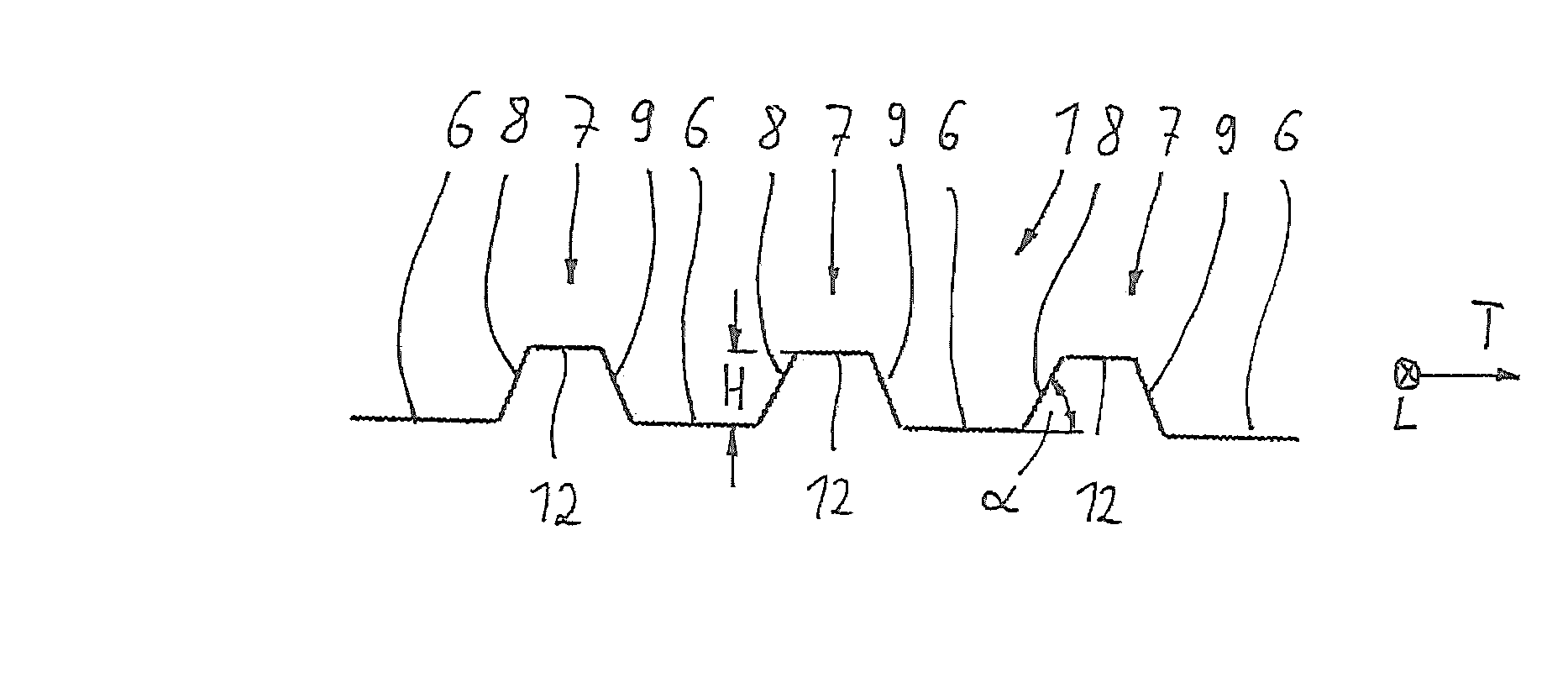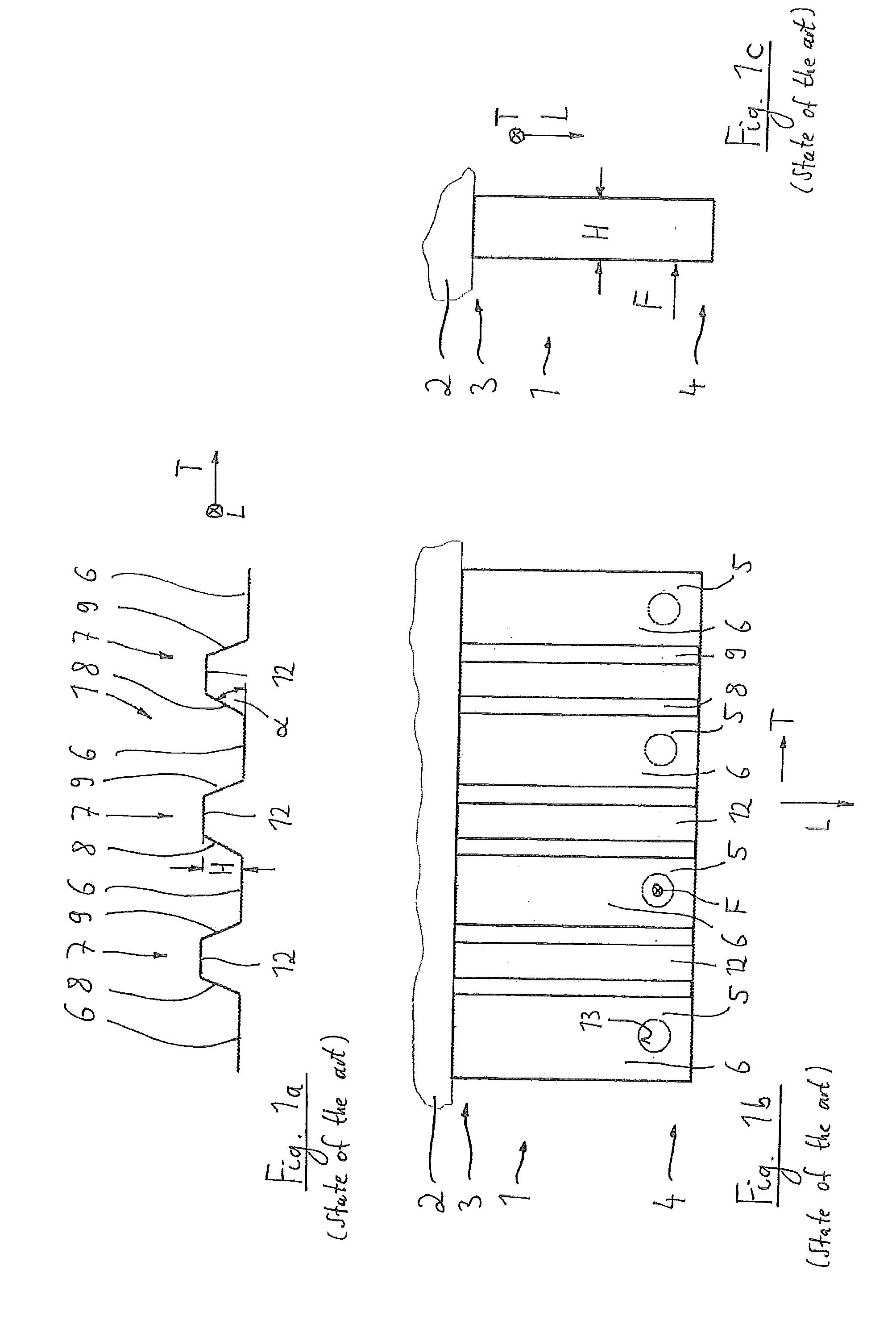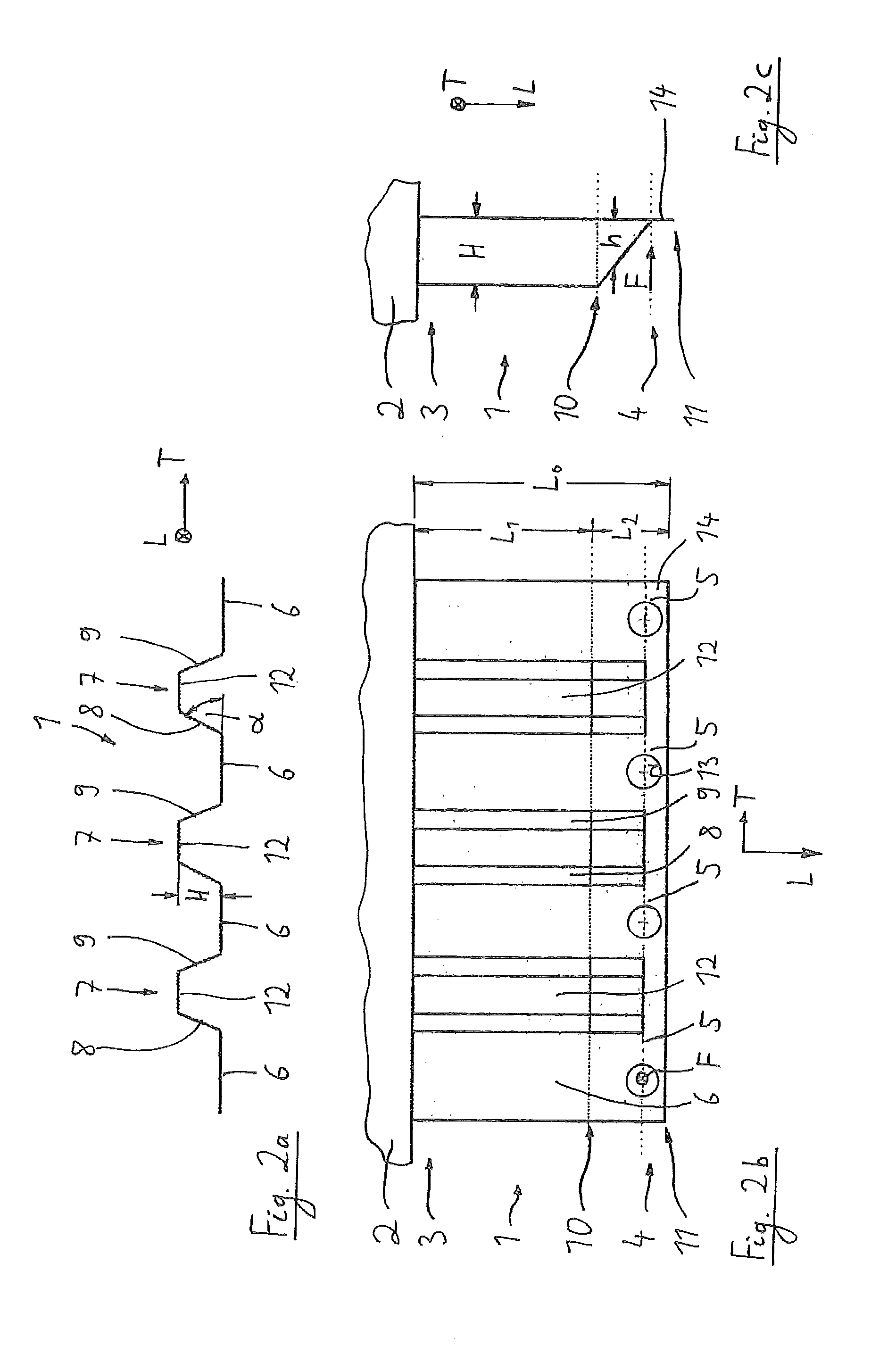Fastener element
a technology of fastener and bending, which is applied in the field of fastener elements, can solve the problems of limiting the bending stiffness of the fastener element, and achieve the effect of increasing the shear stiffness of the corrugation
- Summary
- Abstract
- Description
- Claims
- Application Information
AI Technical Summary
Benefits of technology
Problems solved by technology
Method used
Image
Examples
Embodiment Construction
[0030]In FIGS. 1a, 1b and 1c, a known fastener element 1, made from a fibre-reinforced composite material, is shown.
[0031]The fastener element 1 extends generally in a longitudinal direction L as well as in a transverse direction T. It allows transmission of a load F (force) to a machine part 2. The fastener element is fixed at one of its axial end regions of its longitudinal extension, namely at its end region 3, with the machine part 2. The load F is acting on the fastener element 1 at the other axial end region 4 of the longitudinal extension in a load area 5. Furthermore, the fastener element 1 comprises a plurality of base parts 6 extending in the longitudinal direction L and having the load area 5; the base parts 6 are connected to each other by corrugations 7. Each corrugation 7 has two side walls 8 and 9 which extend under an angle □ from the base part 6. The side walls 8, 9 are joined by a connection part 12. These side walls 8, 9 have a height H, so that the fastener eleme...
PUM
| Property | Measurement | Unit |
|---|---|---|
| angle | aaaaa | aaaaa |
| angle | aaaaa | aaaaa |
| area | aaaaa | aaaaa |
Abstract
Description
Claims
Application Information
 Login to View More
Login to View More - R&D
- Intellectual Property
- Life Sciences
- Materials
- Tech Scout
- Unparalleled Data Quality
- Higher Quality Content
- 60% Fewer Hallucinations
Browse by: Latest US Patents, China's latest patents, Technical Efficacy Thesaurus, Application Domain, Technology Topic, Popular Technical Reports.
© 2025 PatSnap. All rights reserved.Legal|Privacy policy|Modern Slavery Act Transparency Statement|Sitemap|About US| Contact US: help@patsnap.com



